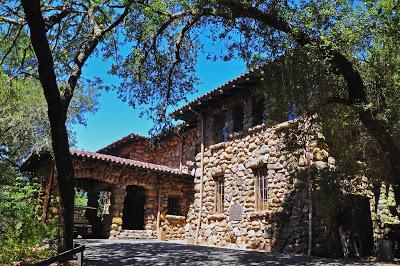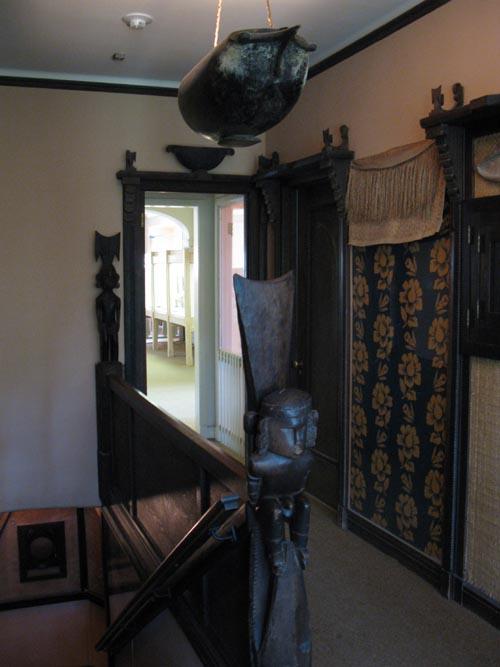Happy Walls
For two years following Jack London's death in 1916, widow Charmian and his step-sister Eliza Shapard were overwhelmed with work. They had legal issues surrounding his will, which essentially left everything to Charmian. They determined to keep the ranch functioning during a time when the country's resources were going to war and his friends refused to support their aim. Charmian handled his remaining manuscripts, publications in process, and her own writings. By 1918, Charmian was exhausted and decided to reward Eliza and herself. A recent movie contract promised funds to cover her plans. To Eliza she gave Wake Robin, once her Aunt Ninetta Eames's home. She decided to build a home of her own to replace the cottage, which was rat-ridden and damp.
To Anna Strunsky, she wrote the new place would be "my house, Anna, not Jack's nor another's--my own expression of myself and the life I seem led to live. It's quite wonderful, this new self of mine--sometimes I think Jack woul have liked this new, real Me--tho' she's perhaps less clinging." Charmian hired architect, Harry P. Merritt, to design a two-storey house out of local stone. He made it a unique expression of Charmian's personality. Her love of the sea was evident in the use of teal shades on the walls and the shaping of the second floor ceiling curved like the interior of a ship captain's cabin.

From the porte cochere entry one went through s tiny hall to a large salon. A large fireplace set the hearth sunk below ground level, providing a cosy pit where one could sit on pillows to talk or read by firelight. Large window banquettes also offered places to sleep or read. Tapa cloth curtains allowed these eaves to be closed for privacy. Behind the fireplace wall was a guest apartment. A dining room faced a large set of windows overlooking the valley (now obstructed by trees), Another door led to a kitchen and pantry, as well as an enclosed stairwell.
Upstairs held two more small guest rooms with a bath in between. Her intended bedroom was as large as the salon below, again with a hearth and banquettes. To the side was a large closet for her famous wardrobe, a dressing room, private bath, and a kitchenette. She would be able to work there without having to go downstairs for nourishment. Characteristic of her personality, the house had a hidden stairwell from the kitchenette to the pantry below. This allowed her to move between the floors without going through the main rooms. In addition, she had a peephole hidden by a mask so she could peer on a visitor below ahead of arriving to greet them.
Charmian was very active in the house plans. The exterior lintels, for example, she requested have unique carvings reflective of South Sea motifs. She chose a red paint color used in her private uptairs area based upon a native cloth she wore on the Snark trip as a wrap. She repeated the use of native artifacts as light fixtures and other decorative use.
The money did not flow as expected so many years passed before the house was habitable. By the late 1920s, she would go sometimes to write or entertain visitors for a few hours. She realized she preferred living in the cottage, that once her grieving was through she no longer found its sad memories of Jack intrusive. During the Great Depression, the Shepard family decided to create a dude ranch experience to raise income and required the cottage for visitor lodgings. Charmian reluctantly moved at last to Happy Walls. By the 1940s, she was back in the cottage.

In 1929, Charmian wrote a simple will that left everything to Eliza Shepard, in appreciation for her support. She requested that after her death Happy Walls retain her memorabilia and turn the building into a museum. She also requested "all possible Jack Londoniana together on the property bearing his name--Jack London Ranch." Eliza's son Irving inherited his mother's legacy. In 1959 he gift-deeded the land with the main ranch buildings to the State of California. In 1960 the area became the basis for Jack London State Historic Park. As requested, Happy Walls became a museum devoted primarily to Jack, although it included Charmian's belongings as well.
In 2012, when financial pressures threatened closing of the park, the Valley of the Moon Natural History Association (VMNHA), a volunteer non-profit, contracted to take over the operations. Under its aegis and fundraising, the park was able to completely redo Happy Walls into a Visitor Center and Museum incorporating the latest scholarship and display technology.

